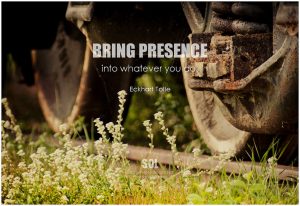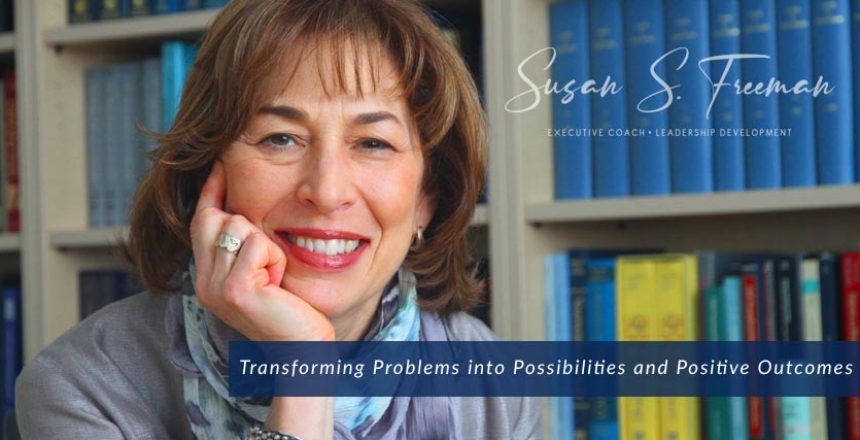
I thought long and hard about how to wrap up this final post for the year. It has been quite a year for many of us, experiencing big challenges, and also significant positive changes, sometimes all at the same time.
As I reflected on what topic to choose, I return to that which has been a hallmark of my work as an executive coach; helping leaders transform themselves through presence so they can in turn transform others. What began for me seven years ago as a whisper, has now become a shout. Much has been written about the importance of presence, mindfulness, and meditation. Entire companies have come to life to teach this work to harried executives.
In a recent Harvard Business Review Article, the following illustrates its continued relevance. “An executive in a multinational pharma company had been receiving poor grades for engagement and leadership effectiveness. Although he tried to change, nothing seemed to work. As his frustration grew, he started tracking the time he spent with each of his direct reports — and every time he received bad feedback, he pulled out his data and exclaimed, “But look how much time I spend with everyone!”
Things improved when he began a daily 10-minute mindfulness practice. After a couple of months, people found him more engaging, nicer to work with, and more inspiring. He was surprised and elated by the results; the real surprise? When he pulled out his time-tracking spreadsheet, he saw that he was spending, on average, 21% less time with his people.
The difference? He was actually there.
 Presence
Presence
He came to understand that, even though he was in the same room with someone, he wasn’t always fully present. He let himself become preoccupied with other activities or let his mind drift to other things. And, most of all, he’d listen to his inner voice when someone was talking. Because of his lack of presence, people felt unheard and frustrated.”
To truly engage other human beings and create meaningful connections, we need to silence our inner voices and be fully present — and being more mindful can help.
In their upcoming book, The Mind of the Leader, , authors Rasmus Hougaard and Jacqueline Carter surveyed more than 1,000 leaders who indicated that a more mindful presence is the optimal strategy to engage their people, create better connections, and improve performance.
Other research bears this out. In a survey of 2,000 employees, Bain & Company found that among 33 leadership traits — including creating compelling objectives, expressing ideas clearly, and being receptive to input — the ability to be mindfully present (also called centeredness) is the most essential of all.
Research also suggests that there’s a direct correlation between leaders’ mindfulness and the well-being and performance of their people. In other words, the more a leader is present with their people, the better they will perform.”
What can leaders do to develop presence?
- Create a practice of mindfulness at home before entering your day.
- Learn to belly-breathe vs. top of lung breathe; the former creates relaxation; the latter creates stress and anxiety in the body
- Ground yourself prior to important conversations; ensure that you are in your body, aware of your emotions, and experiencing your own breath
- Embodied Presence
According to the HBR article, another executive who was interviewed “takes five minutes to ground himself in his body. He visualizes coming fully alive in each cell of his body”. Loren Shuster, chief people officer at the Lego group, explained “When you’re not grounded, when you’re not connected to your body and surrounding environment, you don’t have a strong sense of direction or purpose. You’re just floating. The smallest thing can distract you. This grounding technique helps me clear my mind, recharge my energy, strengthen my instincts, and calm my emotions.”
After this five-minute practice, he walks differently, he talks differently. With more gravitas. With more weight. With more vigor. And as a result, he’s able to be more fully present mentally and physically with those around him. It grounds him in the room like a rock.
My experience with clients has borne this out over and over. The more we work on developing presence, the more effective they become. I receive acknowledgement about the impact of this work on their professional and personal satisfaction.
Let 2018 be the year of your leadership presence.

